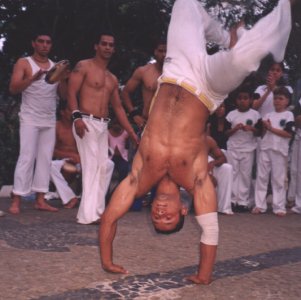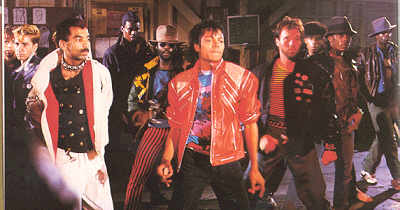Origins of Breakdancing
Breakdancing, also known as b-boying, started in the late 1970s in the South Bronx of New York City. The first breakdancers drew from several sources. DJ Afrika Bambaataa credits James Brown's “Good Foot” with the inspiration for many of the moves: "He was flipping his legs from side to side, and doing things with his hands.” "It was a big dance, everybody was doing the Good Foot, and you was playing all the James Brown records... and then you expand on it."2
Other moves came from martial arts, such as Capoiera (itself having orgins from enslaved Africans in Brazil). Some older African American traditions that may have influenced breakdancing include the lindy-hop, the Charleston, the cakewalk, the jitterbug, double dutch, and black fraternity and sorority stepping 3. These also have some distant African origins.

A Capoiera performance in Brazil 4
A Non-Violent Alternative
Some of the originators suggest that it arose as a non-violent alternative to gang fighting: "Instead of fighting, we break against each other," says Kuriaki Soto of Rock Steady crew. "If I was dancing and somebody were to say, 'you're whack, man. You don't even got the good moves,' I'd tell him instead, 'well, I'll battle you.' Right there, instead of me coming up and hitting him, I'd say, 'I'll battle you, see how good you are.' Whoever has the most moves wins 5."

Michael Jackson used the idea of gang confrontation turned to dance competition in his 1983 video "Beat It." Does such celebrity use of street performance help validate the creaters of breakdancing, or just exploit their creativity for elite careers?6